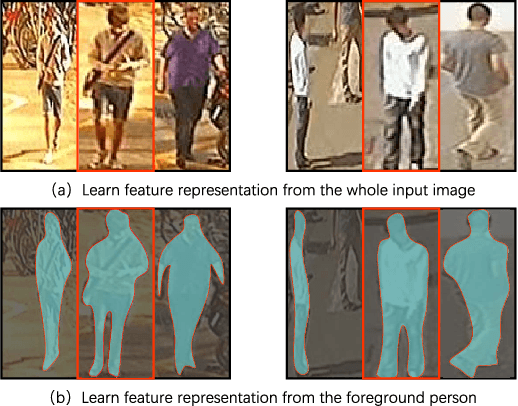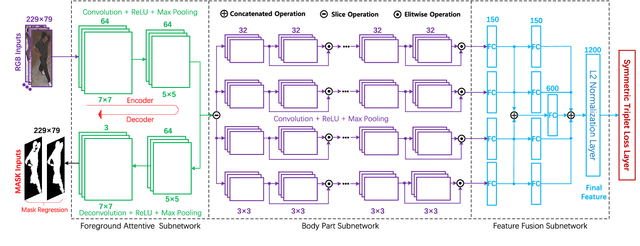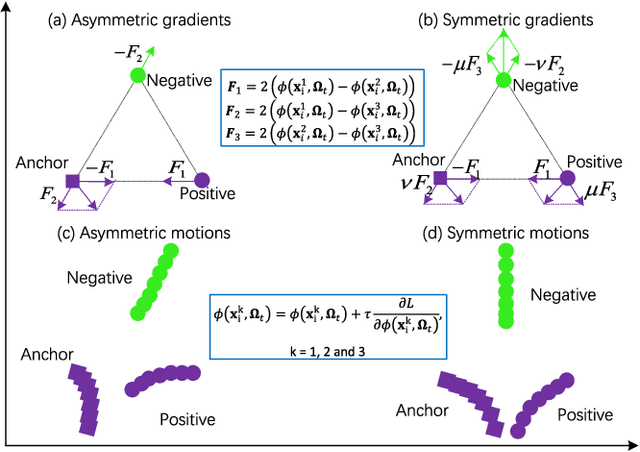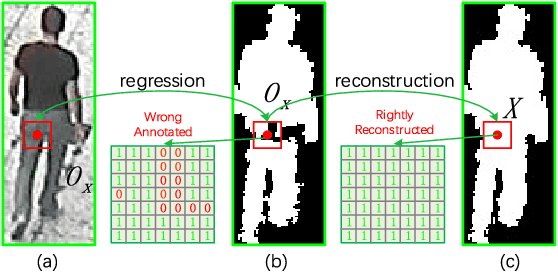Discriminative Feature Learning with Foreground Attention for Person Re-Identification
Paper and Code
Jul 04, 2018



The performance of person re-identification (Re-ID) seriously depends on the camera environment, where the large cross-view appearance variations caused by mutual occlusions and background clutters have severely decreased the identification accuracy. Therefore, it is very essential to learn a feature representation that can adaptively emphasize the foreground of each input image. In this paper, we propose a simple yet effective deep neural network to solve the person Re-ID problem, which attempts to learn a discriminative feature representation by addressing the foreground of input images. Specifically, a novel foreground attentive neural network (FANN) is first built to strengthen the positive influence of foreground while weaken the side effect of background, in which an encoder and decoder subnetwork is carefully designed to drive the whole neural network to put its attention on the foreground of input images. Then, a novel symmetric triplet loss function is designed to enhance the feature learning capability by jointly minimizing the intra-class distance and maximizing the inter-class distance in each triplet unit. Training the deep neural network in an end-to-end fashion, a discriminative feature representation can be finally learned to find out the matched reference to the probe among various candidates in the gallery. Comprehensive experiments on several public benchmark datasets are conducted to evaluate the performance, which have shown clear improvements of our method as compared with the state-of-the-art approaches.
 Add to Chrome
Add to Chrome Add to Firefox
Add to Firefox Add to Edge
Add to Edge